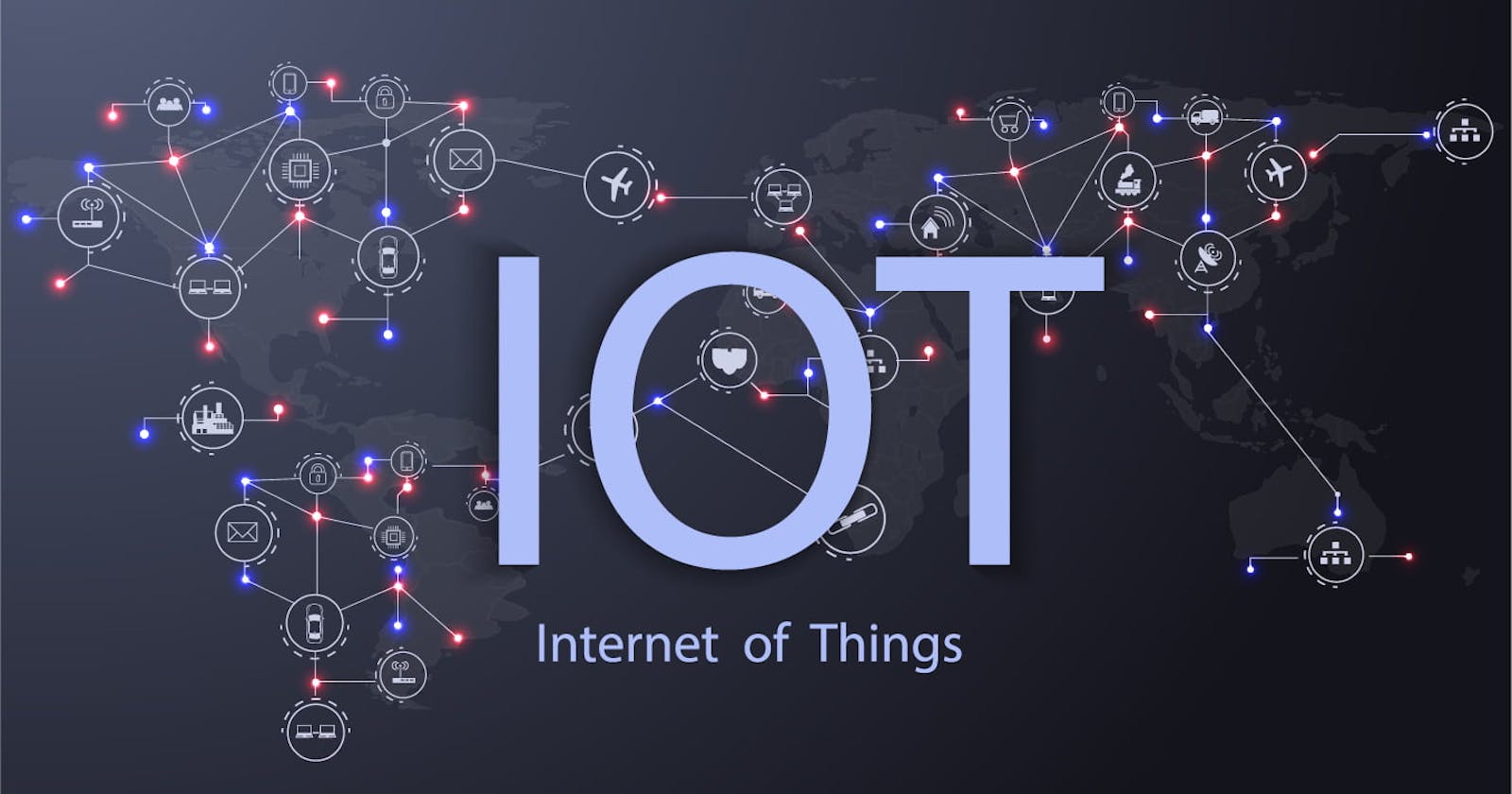Outline
- What is IoT
- Why IoT matters
- Things that collect information
- Things that can send the information
- Things that can do both - Real power of IoT
- Where IoT can be implemented
- Reference materials to understand it better
IoT (Internet of Things) has been a buzzword in the industry for a long time. Since its inception in the year 1999, it has observed exponential growth, The beginning of this growth has started in the year 2009 where a number of things connected to the internet were more than the number of people connected to the internet. From there another big event in the timeline was in the year 2011 when the IPv4( The scheme of addressing was based on 32 bit. So, 232 IP addresses can be assigned to devices connected to the internet) has been updated to IPv6( it is based on 128 bit. So, 2128 IP address can be assigned), (The number of IP address available in the IPv6 is so huge that Steven Leibson a technology expert and marketing pro gave a statement stating that “ On assigning an IPv6 address to every atom on the surface of the earth and still have enough addresses left to do another 100+ earths”). And by the year 2020, there will be more than 50 billion devices connected to the internet and IoT will become a 19 trillion dollar industry. Now, let us understand what actually IoT is.
What is IoT?
IoT in simple words means connecting all the devices equipped with sensors to the internet and allowing them to communicate among themselves by sending or gathering the information or doing both. And the information which is sent for an IoT device is analyzed to take appropriate action. Examples of things ( or Devices) around you that are connected to the internet are:-
- Wearables like fitness bands and smartwatches, that have sensors that can continuously monitor the health condition of the person using them.
- Medical sensors for monitoring the state of one’s health
- With the help of geographical sensors connected to the internet, which will help in determining the location of objects or individuals
- Sensors that measure environmental parameters such as temperature, atmospheric pressure, sunlight intensity, pollutions, etc. Can be used to get a clear site of climatic conditions in one place.
- Sensors monitoring the work of technical appliances, for instance measuring energy use, operating efficiency, including specialized sensor networks in industrial installations
And many more……
Now let us understand why IoT should be used
Why does IoT matter?
When something is connected to the internet, that means that it can send information or receive information, or both. This ability to send and/or receive information makes things smart, and smart is good. Let’s consider smartphones as an example. Right now you can listen to just about any song in the world, but it’s not because your phone actually has every song in the world stored on it. It’s because every song in the world is stored somewhere else, but your phone can send information (asking for that song) and then receive information (streaming that song on your phone). To be smart, a thing doesn’t need to have super storage or a supercomputer inside of it. All a thing has to do is connect to super storage or to a supercomputer.
Being connected is awesome.
In the Internet of Things, all the things that are being connected to the internet can be put into three categories:
- Things that collect information and then send it.
- Things that receive information and then act on it.
- Things that do both.
And all three of these have enormous benefits when implemented together.
. Collecting and Sending Information:-
This means sensors like temperature sensors, motion sensors, moisture sensors, air quality sensors, light sensors, you name it. These sensors when connected to the internet, allow us to automatically collect information from the environment, which in turn allows us to make more intelligent decisions. On the farm, automatically getting information about the soil moisture can tell farmers exactly when their crops need to be watered. Instead of watering too much (which can be expensive due to over-use of irrigation systems and environmentally wasteful) or watering too little (which can lead to a huge loss of crops), the farmer can ensure that crops get exactly the right amount of water. More money for farmers and more food for the world!
Just as our sight, hearing, smell, touch, and taste allow us, humans, to make sense of the world, sensors allow machines to make sense of the world.
. Receiving and Acting on Information:-
We’re all very familiar with machines getting information and then acting. Your printer receives a document and it prints it. Your car receives a signal from your car keys and the doors open. The examples are endless.
Whether it’s a simple as sending the command “turn on” or as complex as sending a 3D model to a 3D printer, we know that we can tell machines what to do from far away.
So what?
The real power of the Internet of Things arises when things can do both of the above. i.e Things that not only collect information and send it but also receive information and act on it.
. Doing Both:-
Let’s quickly go back to the farming example. The sensors can collect information about the soil moisture to tell the farmer how much to water the crops, but you don’t actually need the farmer. Instead, the irrigation system can automatically turn on as needed, based on how much moisture is in the soil. In this way when a device is connected to the internet it made the device smarter and made it take the right decision on its own by analyzing the situation.
Where IoT can be implemented?
IoT has a lot of applications in the field of agriculture, textile, transport, automobile, chemical industries.
In the Agriculture industry, IoT enables the remoteness of farming operations and the large number of livestock that could be monitored easily and efficiently, this could revolutionize the way farmers work. Soon smart farming will become an important application field in predominantly agricultural-dependent countries.
In the Healthcare industry, IoT enables the use of connected health care systems due to which all the essential medical services can be made more accessible to people than they are now and also smart medical devices is another outcome of IoT because of which the monitoring of one’s health becomes easier and even the diagnosis of the problem can be done in a more effective way than before.
In the Automobile industry, the use of IoT in cars will help in continuous monitoring of different components of the car and will notify the concerned person if there is any problem in the car before handed and will lead to the easy diagnosis of the issue before it leads to a serious problem
And one of the famous applications of the IoT is the Smart home where all the devices in the house are connected to the internet making their usage easier, due to this one’s living will be more personalized and comfortable
And many more applications…….
To get started with the IoT these are some projects:-
· Controlling an LED using a mobile app
· Controlling LED with Google Assistant
· Complete Home Automation Project
· Sending sensor data to the server and monitoring it from anywhere in the world
These are the basic projects which show how to control and monitor data and things over the internet.
That is all for this blog. See you in the next one.
Signing off
M.N.S

